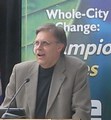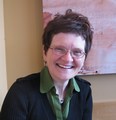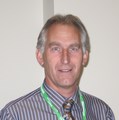CHANGE THE WAY WE DEVELOP LAND TO CREATE LIVEABLE COMMUNITIES & PROTECT STREAM HEALTH IN BC: “We are using the slogan The New Business As Usual to convey the message that, for change to really occur, practices that until now have been viewed as the exception must become the norm moving forward,” stated Deputy Minister Dale Wall when he announced that the pilot Vancouver Island Learning Lunch Seminar Series would be proceeding in two locations (May 2008)

“We have to develop models of practice. We have to develop expertise to support The New Business As Usual. Vancouver Island is the pilot region for much of this work. The approach to practitioner education is inclusive, and supports water-centric planning and a design with nature way-of-thinking. The Vancouver Island Learning Lunch Seminar Series will help facilitate inter-departmental alignment and a consistent regional approach. The City of Courtenay and Cowichan Valley Regional District are partners who are helping us pilot this work,” stated Dale Wall.










